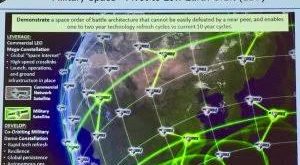Introduction:
In today’s digital age, video content has become a dominant force, captivating audiences across various platforms. Behind the scenes, digital video processing technology plays a pivotal role in enhancing, optimizing, and delivering the rich visual experiences we enjoy. In this blog article, we will delve into the world of digital video processing, exploring the latest trends, cutting-edge technologies, and valuable market insights that are shaping the industry.
Video is an electronic medium for the recording, copying, playback, broadcasting, and display of moving visual media. Video is the fastest-growing medium being used for both content consumption, marketing, and even internal comms.
video is the fastest-growing medium being used for both content consumption, marketing, and even internal comms. Here are some of the latest stats on video usage: 82% of internet users watch online video. The average person watches 1 hour and 15 minutes of online video per day.
50% of marketers say video is the most effective form of content marketing. Videos are 1200% more likely to be shared on social media than text and images combined.
A Facebook executive predicted that their platform will be all video and no text by 2021. 72% of customers would rather learn about a product or service by way of video. (HubSpot). 90% of information transmitted to the brain is visual, and visuals are processed 60,000X faster in the brain than text.
A video signal is a sequence of time-varying images that capture motion and change over time. Unlike a still image that represents a spatial distribution of intensities that remain constant, a video signal involves spatial intensity distributions that vary dynamically with time.
In the modern era, digital video systems have become prevalent, and they heavily rely on digital techniques for processing and transmitting video data. High-definition video displays, such as DLP, LCD, LCOS (including variants like SXRD and D-ILA), and plasma, have become dominant in the television industry. These digital technologies operate differently from traditional CRT displays. Instead of “drawing” lines of picture information on the screen, they utilize an array of pixels to form the images. Each frame is displayed in its entirety all at once, with all pixels being activated simultaneously to create the complete image. This approach differs from the line-by-line scanning method employed by CRT displays.
The shift to digital video systems has brought numerous benefits, including improved image quality, increased resolution, and more efficient transmission and storage. Digital video processing allows for advanced techniques such as video compression, which reduces file sizes without significant loss of quality, enabling efficient streaming and storage of high-definition content.
Advances in computer technology have allowed even inexpensive personal computers and smartphones to capture, store, edit and transmit digital video.
The demand for digital video is increasing in areas such as video teleconferencing, multimedia
authoring systems, education, and video-on-demand systems. The development of high-resolution video cameras with improved dynamic range and color gamuts, along with the introduction of high-dynamic-range digital intermediate data formats with improved color depth, has caused digital video technology to converge with film technology.
Video Processing Technology for Enhanced Visual Experiences
In the realm of digital video, information is captured and represented through spatial and temporal digitization, resulting in quantized pixel intensities. Videos are composed of frames, which are rapidly changed to create an illusion of continuous motion, commonly referred to as the frame rate.
Video systems encompass a wide range of display resolutions, aspect ratios, refresh rates, color capabilities, and other qualities. Spatial sampling, an essential aspect of video processing, takes into account the sensitivity of the Human Visual System (HVS) to spatial frequencies. Each pixel’s value in a digital image is quantized with a finite precision, typically using 8 bits per luminance sample.
Temporal sampling is equally crucial, as it determines the smoothness of motion in a video. If the time gap between successive frames is too large, viewers may perceive jerky motion. The sensitivity of the HVS diminishes at higher frame rates. Most video formats employ temporal sampling rates of 24 frames per second and above to ensure a smooth viewing experience.
Digital video formats define the size of individual frames in terms of pixels and are displayed at a specified frame rate. For example, NTSC video utilizes a frame rate of 30 frames per second. Frame formats, such as Common Intermediate Format (CIF) with 352 x 288 pixels or Quarter CIF (QCIF) with 176 x 144 pixels, consist of three components for each pixel: luminance (Y) and two chrominance components (Cb and Cr).
Video processors are responsible for performing various functions, including upconversion, deinterlacing, frame rate conversion, noise reduction, artifact removal, lip sync (A/V synchronization), and edge enhancement. Deinterlacing is particularly important for digital displays, as most video sources transmit interlaced images, where only half of the image is transmitted in each frame. Video processors handle the conversion from interlaced to progressive format, ensuring a seamless viewing experience.
Noise reduction is another crucial aspect of video processing, as random noise can degrade the image quality. Spatial filters remove high-frequency data, while temporal filters evaluate multiple frames to identify and remove noise. By utilizing both spatial and temporal filtering techniques, visible noise can be effectively reduced, resulting in cleaner and more visually pleasing images.
Transcoding, a process of compressing video files with minimal quality loss, is integral to video processing. This technique enables the conversion of video files from one format to another, ensuring optimal streaming performance and eliminating format and bitrate issues. Transcoding plays a vital role in delivering content to users without buffering, while maintaining the best possible quality.
Video processing technology has revolutionized the multimedia industry, introducing advancements like Digital Versatile Disks (DVDs), Digital Satellite Systems (DSS), high-definition television (HDTV), and digital cameras. The field of video processing encompasses various areas, including video compression, video indexing, video segmentation, video tracking, and more.
As video processing technology continues to evolve, we can expect further advancements in image quality, compression efficiency, and interactive experiences. Emerging technologies like virtual reality, augmented reality, and mixed reality will further shape the future of video processing, offering immersive and engaging visual experiences to users.
In conclusion, digital video processing technology has opened up new possibilities for multimedia applications and entertainment. By optimizing spatial and temporal aspects, applying noise reduction techniques, and leveraging transcoding capabilities, video processing technology enhances visual experiences and enables seamless content delivery across various platforms. As the industry progresses, we can look forward to even more remarkable innovations and advancements in the field of video processing.
For in-depth understanding on Digital Video Processing technology and applications please visit: Comprehensive Guide to Digital Video Processing: Techniques, Tools, and Applications
Enhancing Video Processing for Optimal Image Quality
In the quest for achieving optimal picture quality on modern high-definition (HD) displays, video processor chips play a crucial role. These chips are integrated into the display devices to convert incoming video signals to the native resolution of the display. However, the challenge lies in ensuring that the video processing effectively scales and enhances the image while eliminating artifacts that may arise during the conversion and transmission of video signals.
Video processor chips, also known as integrated circuits (ICs), are specifically designed to process video images for various applications. They are capable of handling both analog and digital signals, while mitigating issues like multi-path interference and adjacent-channel noise. Additionally, these chips may incorporate features such as high-definition (HD) decompression, pixel-based video analysis, adaptive pixel interpolation, and advanced field merging functions, which help address problems associated with interlaced coding.
Some video processing chips are capable of decoding multiple simultaneous standard-definition (SD) signals. Others comply with digital television standards set by organizations like the Advanced Television Systems Committee (ATSC) and the European Digital Video Broadcasting (European DVB). Furthermore, certain video processor chips offer support for different display technologies, including cathode ray tubes (CRTs) and flat panel devices.
Video processor chips come in various integrated circuit (IC) package types to accommodate different requirements. Dual in-line packages (DIP) can be made of ceramic (CIP) or plastic (PDIP), while quad flat packages (QFPs) feature a large number of fine, flexible, gull-wing shaped leads. For space-constrained applications, the small outline (SO) packages with 8, 14, or 20 pins, as well as the transistor outline (TO) packages, including TO-92 for low-power devices, TO-220 for high-power applications, and TO-263 as the surface-mount version, are commonly available.
Other package options for video processor chips include shrink small outline package (SSOP), small outline integrated circuit (SOIC), small outline package (SOP), small outline J-lead (SOJ), discrete package (DPAK), and power package (PPAK). These packaging methods, such as tape reel, rail, bulk pack, and tube technologies, facilitate shipping, handling, and configuration of the components in industry-standard automated board-assembly equipment. Each method has its specific use, with tape reel being ideal for automated assembly, rail mostly utilized in production environments, bulk pack for individual parts, and tube or stick magazine for automatic placement machines.
However, it’s worth noting that despite advancements in video processing technology, there are still challenges to overcome. The rapid growth of larger HD displays has magnified image defects caused by subpar video processing. As a result, efforts are being made to bridge this gap and ensure that video processing technology keeps pace with the evolving demands of higher-resolution displays, enabling viewers to fully appreciate the picture quality and immersive experience offered by modern display devices.
In conclusion, video processor chips are indispensable components in achieving optimal picture quality on HD displays. These chips provide the necessary processing capabilities to scale, enhance, and eliminate artifacts in video signals. With ongoing advancements in video processing technology, manufacturers strive to keep pace with the ever-increasing demands of larger and higher-resolution displays, ensuring a seamless and immersive visual experience for viewers.
Embracing the Future: Trends in Video Processing Technology
The world of video processing is constantly evolving, driven by technological advancements and changing market dynamics. In this era of digital transformation, several key trends are shaping the landscape of video processing solutions, offering exciting opportunities for video service providers to enhance their operations and deliver compelling viewing experiences.
One prominent trend is the adoption of software-defined solutions. The decoupling of software from hardware is becoming increasingly important for next-generation video processing. This approach allows video service providers to leverage software-defined networking (SDN) and network functions virtualization (NFV) principles, providing the agility needed to adapt to market changes swiftly. By breaking free from proprietary fixed-function hardware, operators can harness the benefits of Moore’s law, achieving significant cost savings in terms of capital expenditure (CAPEX) and operational expenditure (OPEX) as the performance/price ratio of commercial off-the-shelf (COTS) hardware continues to improve over time. This software-defined approach also enables seamless integration of new codecs, standards, and protocols without the need for expensive hardware upgrades.
Another key trend is the move towards virtualized architectures. This aligns with the decoupling of hardware and software, enabling video service providers to scale their operations efficiently. With a virtualized architecture, providers can adapt to fluctuating demands on a daily basis and quickly roll out new services to meet changing user consumption habits and market dynamics. By leveraging virtualized resources, video service providers gain the compute flexibility necessary to respond to evolving industry requirements.
The advent of cloud technology has revolutionized video processing workflows. Streaming service providers are increasingly migrating to cloud-based workflows for video processing, editing, encoding, storage, and delivery. This transition brings numerous benefits, including reduced management and maintenance costs, enhanced operational efficiency, scalability, and reinforced security. The COVID-19 pandemic further accelerated the shift towards cloud video solutions as the surge in streaming viewing highlighted the limitations of traditional hardware-based infrastructures. Streaming providers learned the hard way that cloud-native and cloud-neutral media processing and delivery services offer unparalleled flexibility and scalability to cope with massive shifts in streaming consumption. Embracing the cloud allows providers to meet the growing demands of their audience while ensuring a high-quality experience.
In conclusion, video processing technology is undergoing significant transformations, driven by trends such as software-defined solutions, virtualized architectures, and cloud video workflows. These trends empower video service providers to adapt to changing market dynamics, enhance operational efficiency, and deliver exceptional viewing experiences to their audiences. As technology continues to advance, it is crucial for video service providers to stay at the forefront of these trends, leveraging the power of digital innovation to unlock new opportunities and shape the future of video processing technology.
The Rise of High-Quality Video: With the advent of high-resolution displays and immersive technologies like VR and AR, the demand for high-quality video content is soaring. Digital video processing enables the capture, editing, and delivery of stunning visuals, ensuring that every pixel comes to life. From 4K and 8K video to HDR and wide color gamut, the industry is constantly pushing the boundaries of what is visually possible.
Advancements in Video Compression: Efficient video compression is crucial for seamless streaming and reduced storage requirements. Innovations in video compression algorithms and codecs have paved the way for higher compression ratios without compromising quality. Emerging standards like HEVC (H.265) and AV1 are driving the industry forward, enabling the delivery of high-quality video over limited bandwidth.
Artificial Intelligence and Video Processing: The integration of artificial intelligence (AI) with video processing has unlocked new possibilities. AI-powered algorithms enable automatic video analysis, object recognition, and scene understanding, facilitating applications like automated video editing, content recommendation, and personalized experiences. Deep learning techniques are revolutionizing video processing, making it smarter and more efficient.
Real-Time Video Processing and Mobile Optimization: With the explosive growth of live streaming and mobile video consumption, real-time video processing and mobile optimization have become paramount. Technologies like cloud-based processing, adaptive streaming, and mobile-friendly codecs ensure that videos can be delivered seamlessly across various devices and network conditions.
Video Processing Market
The global video processing platform market grew from $6.83 billion in 2022 to $8.09 billion in 2023 at a compound annual growth rate (CAGR) of 18.5%. The video processing platform market is expected to grow to $15.93 billion in 2027 at a CAGR of 18.4%.
The increase in the number of internet users is expected to propel the growth of the video processing platform market over the forecast period. The internet plays a crucial role in people’s lives today as a large portion of the population’s lives are immersed in digital technology. A cloud-based video processing platform is a technology that provides video service operators with standardized features and numerous monetization approaches.
These systems also aid in the integration of video-on-demand, multiscreen video infrastructure, television abilities, and formats. For instance, according to the DataReportal report, internet users are growing at a 4.8% yearly rate, with an average of more than 600,000 new users added each day, in October 2021, 4.88 billion people around the world are reported to use the internet. Therefore, the increase in the number of internet users is contributing to the growth of the video processing platform market.
Technological advancements are shaping the video processing platform market. Key players operating in the video processing platform solutions market are focusing on developing advanced technological solutions to strengthen their position in the market. For instance, in June 2021, MediaKind, an India-based media technology solutions company launched MediaKind Engage based on cloud-native technology. MediaKind Engage is a brand-new end-to-end direct-to-consumer (DTC) video contribution, creation, broadcasting, and audience interaction solution. The solution allows sports organizations, broadcasters, and content owners to manage a smooth transition to cloud-based processes while also increasing the reach, scope, and dependability of their video streaming content to a global audience.
In November 2021, Ericsson, a Sweden-based telecommunications company acquired Vonage for $ 6.2 billion. This acquisition exemplifies Ericsson’s objective of expanding its wireless enterprise footprint and expanding its global offerings. Vonage is a US-based telecommunications company that offers a video processing platform.
North America was the largest region in the video processing platform market in 2022. The regions covered in the video processing platform market report are Asia-Pacific, Western Europe, Eastern Europe, North America, South America, Middle East, and Africa.
Future Trends and Opportunities:
Looking ahead, the future of digital video processing holds immense potential. Advancements in 5G networks, edge computing, and IoT integration will further enhance video processing capabilities. Personalization, interactivity, and immersive technologies will continue to shape the industry, allowing for more customized and engaging video experiences. Moreover, emerging areas like virtual reality, augmented reality, and mixed reality will push the boundaries of what’s possible in video processing.
Conclusion:
Digital video processing technology is revolutionizing the way we create, edit, and consume video content. From advancements in video quality and compression to the integration of AI and real-time processing, the possibilities are endless. As the market continues to evolve, businesses and individuals need to stay abreast of the latest trends and technologies to unlock the full potential of digital video processing. Embracing these innovations will not only enhance the visual quality of videos but also open up new opportunities for engagement, monetization, and impactful storytelling.
References and Resources also include:
https://www.eetimes.com/what-is-a-video-processor-and-why-is-it-important/#
 International Defense Security & Technology Your trusted Source for News, Research and Analysis
International Defense Security & Technology Your trusted Source for News, Research and Analysis


